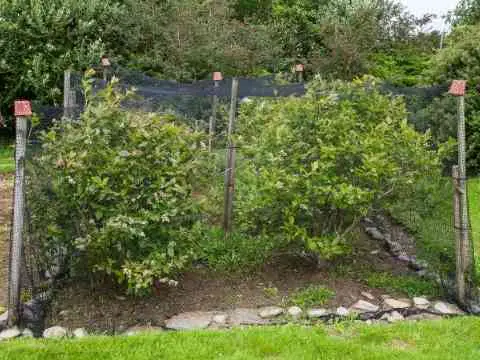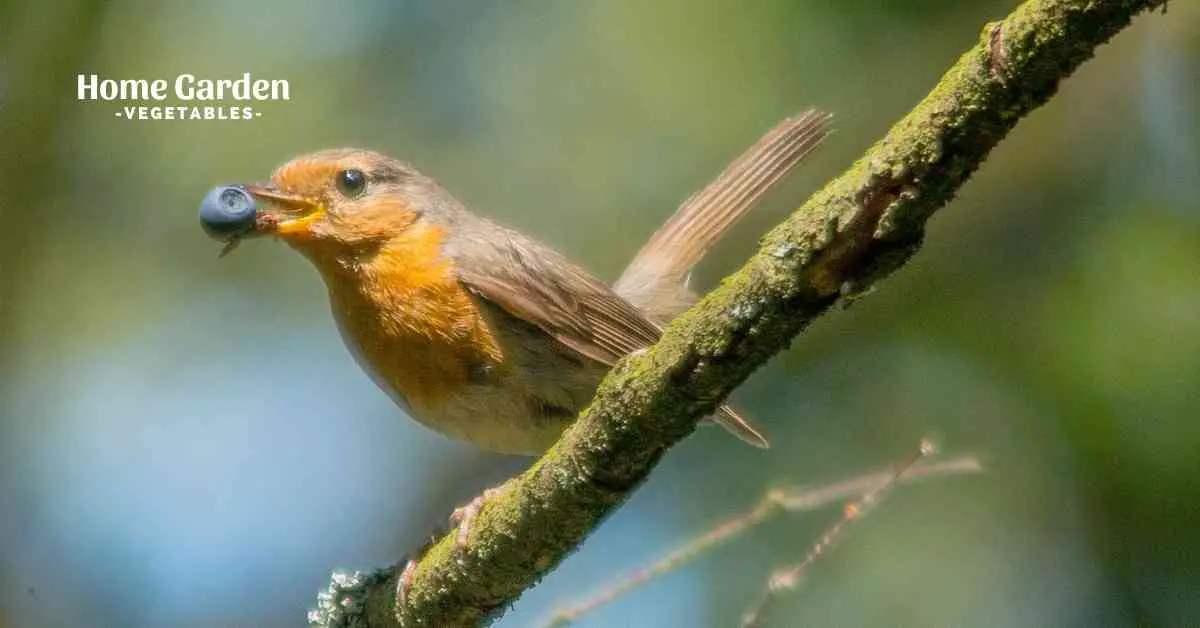You tend to your blueberry bush all season long – water it, fertilize it, prune it – only to enjoy those lovely berries at the end of the season. It can be heartbreaking to learn that the fruits are all gone. Even what’s left on the bush are bitten, damaged fruits that are far from appetizing. So, who’s the culprit? Birds. While you have nothing against wildlife, you don’t always have to share your berries with them. They’ve had more than their fair share in the past season.
It’s about time you claim back your blueberry bushes from the birds! Continue reading, and you’ll learn all about how to protect blueberry bushes from birds.
Reader Poll: What online courses would interest you?
What Are You Up Against – Birds That Attack Blueberries
Several kinds of birds will gladly eat your blueberries. You’ll often spot robins, mockingbirds, and starlings gobbling down your berries. Sparrows and warblers also love to eat blueberries, especially as the migration approaches.
Bigger birds will swallow the entire fruit, but the smaller ones will only peck, leaving the bitten, damaged fruit on the bushes to spoil. Birds will not just eat blueberries but will also waste many in the process by knocking down ripe and unripe fruit to the ground. Unless you take action, there won’t be much left for you to enjoy.
Different Options To Keep Away Birds From Your Blueberries
Different options are available to keep your blueberry bushes safe from birds. Let’s take a look at each one so you can select what suits you most:
Subscribe to our newsletter!
- Bird Netting

Bird netting is the most effective and commonly used method employed by blueberry growers to protect the fruit from birds. The netting creates a physical barrier between the birds and blueberries, making it impossible for them to reach the berries or cause any harm.
Blueberry bushes can grow 6 feet or even taller for some varieties. You’ll need a structure that can easily accommodate a full-sized bush. You can purchase a standard garden netting with a mesh size small enough to keep out even the smallest birds and build a sturdy structure with bamboo poles or pressure-treated posts to drape the netting over it.
Choose a 3-quarter-inch mesh size for the netting to prevent all kinds of birds from reaching the bushes. Make sure the poles are at least 7-feet, so the blueberry bush fits in easily without pushing the stems or fruit against the netting. Make sure there’s enough room for you to move around inside the cage for harvesting.
Another important thing to consider is to get enough netting that it can reach all the way to the ground from all sides; otherwise, the birds will simply land on the ground, hop to your bushes and feast on the berries.
- Kool-Aid
The kids might love Kool-Aid, but the birds definitely hate it, especially the grape-flavored one! Grape-flavored Kool-Aid contains a compound called methyl anthranilate, which gives it a grape-like smell. This compound is very unappealing to birds, which is exactly what makes the product an excellent repellent.
As soon as the berries start changing color, spray the bushes with a Kool-Aid solution. Mix 4 packets of grape-flavored Kool-Aid in one gallon of water and spray it on the berries. You may need to repeat applications several times during the season to make the technique effective.
- Table Sugar
If you don’t want to buy anything, something that’s always present in the kitchen will do the job – table sugar. Fruits contain monosaccharide sugars that are easy to digest for the birds. In contrast, table sugar contains more complex disaccharides, which the birds aren’t capable of digesting. Dissolve 5 pounds of sugar in 2 quarts of water to create a sugar solution and spray the berries with it as soon as they start ripening. You’ll have to repeat the application after each rainfall.
- Audible Deterrents
Audible bird deterrents employ distress noises, predator calls and loud noises to keep the birds far from your garden. These bird control devices are easily available in stores and work well at keeping away birds and other animals from your blueberry bushes.
- Visual Deterrents
Visual deterrents are another simple, low-cost approach to protect your blueberries from birds. Winding shiny tape around the stems of the bushes works well in scaring away the birds. Other than the reflective print on the tape, it flutters with the wind to amplify the effect. Gardeners also install terror eye balloons and hawk-shaped kites to keep away the birds.
Protection From Other Animals
Blueberry bushes aren’t just susceptible to bird attacks. Certain other animals are a threat too. Rodents like mice and voles won’t eat the berries but will nibble on the bark to weaken the bushes. If you often encounter such animals in your area, it will help to create a wire mesh fence around the bush, making sure it extends 6 to 8 inches underground.
Deer can also harm the blueberry bushes. Since they can jump, you’ll need fencing that’s at least 8 feet high to keep them away from your plants. If you install fencing that’s at least 8 feet high above the soil level and at least 6 to 8 inches underground, it’s enough to keep both deer and rodents at bay.
Conclusion
So now that you know how to protect your blueberry bushes from birds and other animals, you shouldn’t have to share your berries with anyone anymore. Keep the fruit of your hard work all to yourself because you’ve earned it!

